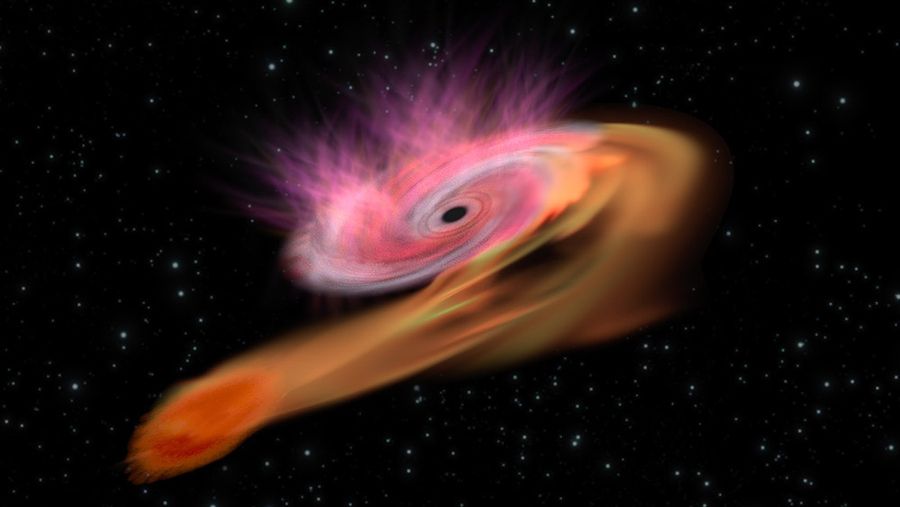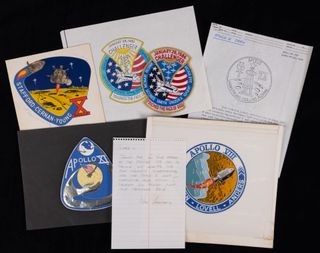Solar scientists have found tiny, short-lived jets of energy on our sun to be the primary drivers of the solar wind, marking a step toward decoding our star’s elusive behavior and, eventually, refining predictions of its storms. The “solar wind” refers to pockets of energetic particles blasted out from the sun. These particles are occasionally directed toward Earth, like last summer when a rare cluster of such storms rained on our planet and sparked breathtaking auroras across the globe — likely the strongest auroras we’ve seen in centuries. The solar…
Read MoreCategory: Solar System
Our solar system
Gamma rays create Red Hulk in Captain America: Brave New World, but how do they work in the real world?
Captain America: Brave New World opens in theaters globally on Valentine’s Day 2025, bringing with it a popular expansion to Hulk-lore, the Red Hulk. Like all Hulks across various forms of media, there is a good chance that the origins of the Red Hulk in the latest installment of the Marvel Cinematic Universe (MCU) are tied to a form of high-energy radiation called “gamma-rays.” Gamma rays originate from a variety of sources in both the Marvel Universe and the real world. Primary among non-fictional cosmic gamma-ray sources, are supernovas, neutron…
Read MoreWin a chance to see a SpaceX rocket launch thanks to Bethesda, creators of ‘Starfield’
2023’s ‘Starfield‘ was a fascinating (albeit flawed) game that nailed the feeling of discovery among the stars and the pursuit of science in a fictional future. Now, shortly after the release of its Shattered Space expansion, Xbox and Bethesda are teaming up with Lonestar to celebrate the launch of the long-awaited Freedom mission, and one lucky fan could witness the event at the Kennedy Space Center. The official Bethesda website unveiled the opportunity on Feb. 7, stating that one ‘Starfield’ fan (plus one companion) will get a chance to watch…
Read MoreNASA moves up return date for Boeing Starliner astronauts after swapping SpaceX Dragon spacecraft
NASA has decided to shuffle around some SpaceX Dragon capsules in order to launch its Crew-10 mission to the International Space Station as soon as possible. The agency is now targeting March 12 for the launch of Crew-10, which will carry three astronauts and a cosmonaut to the International Space Station (ISS). The four crewmembers are scheduled to ride a SpaceX Falcon 9 rocket to low-Earth orbit, and their seats on that rocket will be aboard the Crew Dragon Endurance capsule, NASA announced Tuesday (Feb. 11). Their arrival to the…
Read MoreBest sci-fi comedies of all time
Out of this world laughs and galactic giggles ahead in this list of the best sci-fi comedies of all time. One of the most mesmerizing things about the science fiction genre is the sheer scope of ideas that can be dreamt up, and this aspect lends itself perfectly to comedy; with something so out-of-this-world, there’s a real opportunity to make people laugh. There are crazy and bewildering plots spanning generations, from the twisted future of Idiocracy to the bulging-brained alien invasion of Mars Attacks! To put it simply, there’s a…
Read MoreNASA picks SpaceX to launch Pandora exoplanet mission
A small NASA exoplanet probe now has a ride to Earth orbit. The agency announced on Monday afternoon (Feb. 10) that it has picked SpaceX to launch Pandora, a 716-pound (325-kilogram) satellite designed to help scientists better understand how our understanding of exoplanets‘ atmospheres are affected by changes in their host stars. Pandora will lift off atop a Falcon 9 rocket no earlier than this fall, according to NASA officials. Pandora will head to low Earth orbit. Once there, the satellite will observe at least 20 known transiting exoplanets —…
Read MoreRisks with current Artemis 3 moon landing plan ‘may be too high,’ NASA safety group says
An annual safety report to NASA has both praise for the agency and also underscores a number of cautionary woes, including the space agency’s undertaking of the Artemis back-to-the-moon with humans campaign. The annual report from the Aerospace Safety Advisory Panel (ASAP) has been released. The report observes that NASA has made impressive progress. Challenges remain, however, and are highlighted in this report. Of note, this report points to significant safety observations for both the agency’s Moon to Mars Program and the current International Space Station operations in low-Earth orbit.…
Read MoreWhat was the mysterious space signal scientists discovered in 2024? Here are some possibilities
Having launched on January 9, 2024 by the Chinese Academy of Sciences, the Einstein Probe detected several new events during its commissioning phase. Last October, Yuan Weimin, the spacecraft’s principle investigator, told China Central Television that the X-ray observatory had already discovered around 60 very strong transient celestial objects, close to a thousand potential transients, and nearly 500 stellar flares, along with a gamma-ray burst from the very early universe. One of those detections was EP240408a, an unusual blast that lit up discussions between astronomers. Zhang and his colleagues immediately…
Read MoreFirefly’s Blue Ghost lunar lander leaves Earth orbit to head for the moon
Firefly Aerospace’s Blue Ghost lunar lander is now headed for the moon after firing its engines to send it out of Earth orbit. “Blue Ghost successfully performed a Trans Lunar Injection burn to escape Earth’s gravitational pull and begin a 4-day transit to the moon’s orbit,” Firefly stated on social media platform X on Saturday (Feb. 8). The lander launched on the “Ghost Riders in the Sky” mission on Jan. 15 atop a SpaceX Falcon 9 rocket along with the Japanese space exploration firm ispace’s Resilience moon lander. Both spacecraft…
Read MoreAuction offers Neil Armstrong’s reply to NASA engineer’s Apollo 11 mission patch ideas
Neil Armstrong was appreciative, but as explained in his handwritten letter, it was too late. The Apollo 11 commander and his crewmates had already arrived at a design to represent the first moon landing. Armstrong’s note and the mission patch proposal that inspired it are up for auction in Goldberg Coins & Collectibles’ Feb. 27 public sale in Los Angeles. The emblem art and first moonwalker‘s reply are part of the Clark C. McClelland collection, an archive of astronaut autographs, cscale rocket models and flown memorabilia from the estate of…
Read More








